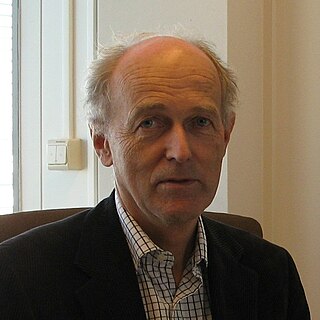Related Research Articles
The term web service is either
Brian Randell is a British computer scientist, and Emeritus Professor at the School of Computing Science, Newcastle University, UK He specialises in research into software fault tolerance and dependability, and is a noted authority on the early pre-1950 history of computers.
Architecture description languages (ADLs) are used in several disciplines: system engineering, software engineering, and enterprise modelling and engineering.
Building information modeling (BIM) is a process involving the generation and management of digital representations of physical and functional characteristics of places. Building information models (BIMs) are files which can be extracted, exchanged or networked to support decision-making regarding a building or other built asset. Current BIM software is used by individuals, businesses and government agencies who plan, design, construct, operate and maintain diverse physical infrastructures, such as water, refuse, electricity, gas, communication utilities, roads, railways, bridges, ports and tunnels.
ISO/IEC/IEEE 42010Systems and software engineering — Architecture description is an international standard for architecture descriptions of systems and software.

Jean Leonardus Gerardus (Jan) Dietz is a Dutch Information systems researcher, Emeritus Professor of Information Systems Design, and part-time Professor of Enterprise Engineering at the Delft University of Technology, known for the development of the Design & Engineering Methodology for Organizations. and his work on enterprise ontology.
Gerardus Maria "Sjir" Nijssen is a Dutch computer scientist, former professor of computer science at the University of Queensland, consultant, and author. Nijssen is considered the founder of verbalization in computer science, and one of the founders of business modeling and information analysis based on natural language.
Peter Bernus is a Hungarian Australian scientist and Associate Professor of Enterprise Architecture at the School of Information and Communication Technology, Griffith University, Brisbane, Australia.
Jacobus Nicolaas (Sjaak) Brinkkemper is a Dutch computer scientist, and Full Professor of organisation and information at the Department of Information and Computing Sciences of Utrecht University.

Method engineering in the "field of information systems is the discipline to construct new methods from existing methods". It focuses on "the design, construction and evaluation of methods, techniques and support tools for information systems development".

Donald G. Firesmith is an American software engineer, consultant, and trainer at the Software Engineering Institute.
DevOps is a set of software development practices that combines software development (Dev) and information technology operations (Ops) to shorten the systems development life cycle while delivering features, fixes, and updates frequently in close alignment with business objectives.
IFIP Working Group 2.1 on Algorithmic Languages and Calculi is a working group of the International Federation for Information Processing (IFIP).
Theodore Joseph Williams was an American engineer and Professor of Engineering at Purdue University, known for the development of the Purdue Enterprise Reference Architecture.
Eckhard D. Falkenberg is a German scientist and Professor Emeritus of Information Systems at the Radboud University Nijmegen. He is known for his contributions in the fields of information modelling, especially object-role modeling, and the conceptual foundations of information systems.
Microservices are a software development technique—a variant of the service-oriented architecture (SOA) architectural style that structures an application as a collection of loosely coupled services. In a microservices architecture, services are fine-grained and the protocols are lightweight. The benefit of decomposing an application into different smaller services is that it improves modularity. This makes the application easier to understand, develop, test, and become more resilient to architecture erosion. It parallelizes development by enabling small autonomous teams to develop, deploy and scale their respective services independently. It also allows the architecture of an individual service to emerge through continuous refactoring. Microservices-based architectures enable continuous delivery and deployment.
Danny Greefhorst is a Dutch enterprise architect and consultant at ArchiXL, known for his work in the field of enterprise architecture.
In software engineering and software architecture design, architectural decisions are design decisions that address architecturally significant requirements; they are perceived as hard to make and/or costly to change.
References
| This software-engineering-related article is a stub. You can help Wikipedia by expanding it. |